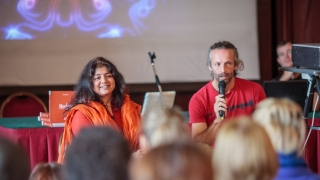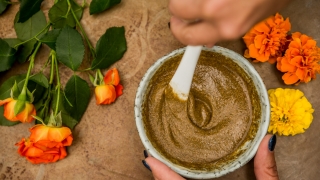Chalana karoti iti chakra—this is the definition of chakras—which means “that which propels, causes, inspires movement, and animates is a chakra.”
The meaning is derived from the sandhi (union) of Cha + Kra where Cha from Chalana means “to move, to animate, to propel,” and Kra from Karoti, means “to create, to cause, to inspire.”
The word chakra may mean many things, including the most common interpretation of these centers of consciousness—wheel, circular, disc, or center.
Chakras are the most misinterpreted, diluted, and misappropriated concept in Yoga and Tantra. One of the reasons is the abstractness around it, which leaves chakras vulnerable to interpretation and esoteric assumptions.
The ancient Indian Vedic and Tantrik texts, like Yoga Sutras, Vijnana Bhairava Tantra, Shiva Sutra, Netra Tantra, etc. give clear, concise, and dependable information around this esoteric concept. I wish they were referred to more when it comes to chakras.
Here are 5 things we clearly got wrong about these circular whirls of energy:
1) Mispronunciation: It is not pronounced as shuck-ruh or shAck-ruh or even chalk-ruh. The correct pronunciation in Sanskrit is Chuck-rr(a)/ /ˈtʃæk.rə/ (American English)
2) 7 is half the truth: Even though the mass understanding is that we have 7 main chakras, the actual number can be as few as 4 and as many as 14, or even more. We lack a reference point, a text, and a context. The text can give us the realistic context around number, location, color, symbol, purpose, etc. For example, in Yoga Sutras, there are 5 main chakras listed for concentration, in Netra Tantra there are 6 chakras, Tantraloka talks about 5 chakras, and Shad Chakra Nirupana discusses 6 chakras.
3) Chakra Balancing is an oxymoron: Often, I hear terms like “chakra blockage,” a chakra imbalance for which the solution is often through chakra diagnosis (through pendulum dowsing, analysis of physical, pranic, and emotional symptoms, or other methods for Chakra balancing, chakra opening, chakra tuning, chakra healing, chakra cleanse, chakra yoga, chakra massage, etc.). Chakras do not need opening because they are closed. They do not need healing because they are diseased. They also do not need balancing because they are imbalanced, or a cleanse, tuning, etc. Chakras simply are internal, subtle points of focus for the mind for the sake of meditation, puja, bhuta shuddhi, etc. It is okay if several terms are new here…become curious instead of being overwhelmed.
P.S. I am not saying that these things might not have worked for someone, I am not here to deny someone’s experience. My intention is to share that there is no such reference (in my limited exploration and studies) in Vedic and Tantrik texts. I hope and wish that we are grounded in our approach to esoteric concepts.
4) Chakra Misappropriation: We have commercialized chakras through rainbow-colored keychains, t-shirts, jewelry, candles, incense, essential oils, diet, etc. Merely wearing or surrounding ourselves with rainbow colored food or merchandise won’t awaken the mind to higher levels of consciousness. These are centers of awareness, not a catchy commodity.
5) Kundalini High: Kundalini awakening is often associated with sequential chakra opening and kundalini energy rising from the root to the crown, giving the practitioner varied experiences. However, Kundalini both ascends and descends, and not just that, eventually it rests in peace in the heart of the heart in complete repose. It does not just stays awakened leading to a constant high.
Let us take a pledge to have context in our practice. Let us be sincerely curious. This will lead to more empowerment and less dependency, dilution and appropriation.
LEARN MORE ABOUT CHAKRAS
Practice with me:
Listen to this podcast:
Bringing Clarity to Chakras Like Never Before on Let's Talk Yoga Podcast. Here
STAY IN TOUCH
Start your FREE subscription to Indu Arora's newsletter to get more on Yoga and Ayurveda here
Say hello on Instagram
Subscribe to my Youtube Channel.



